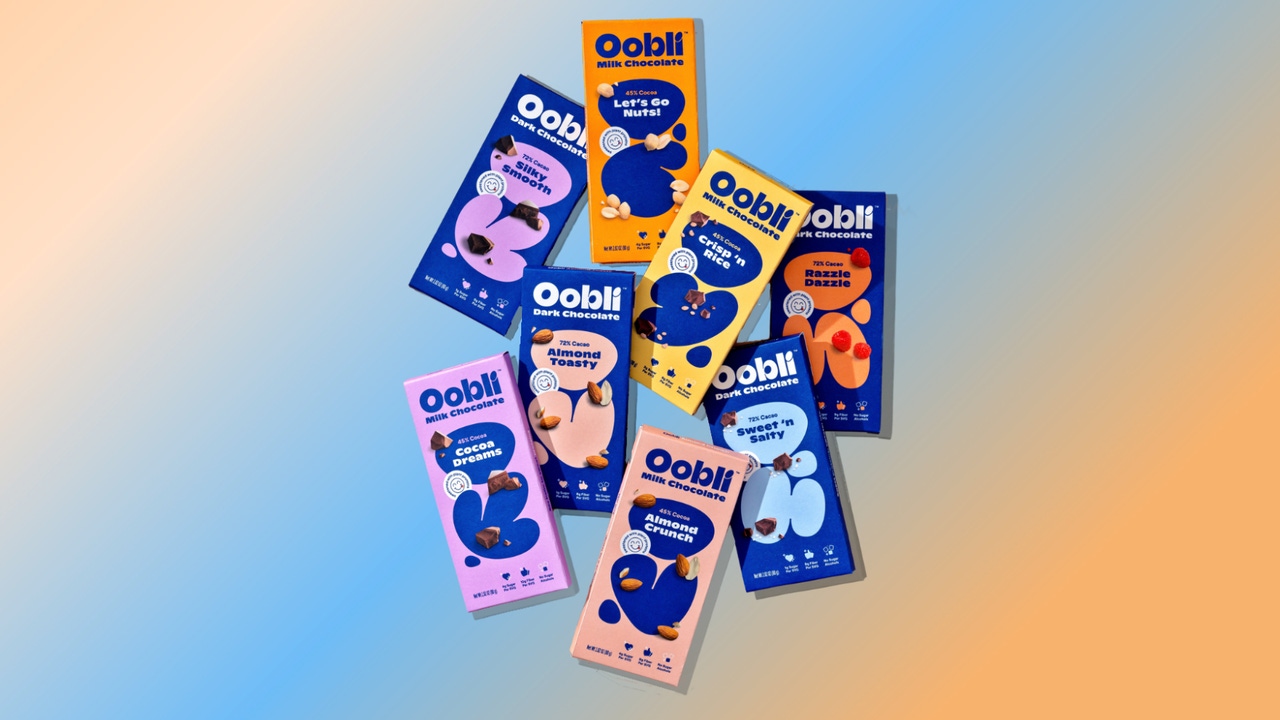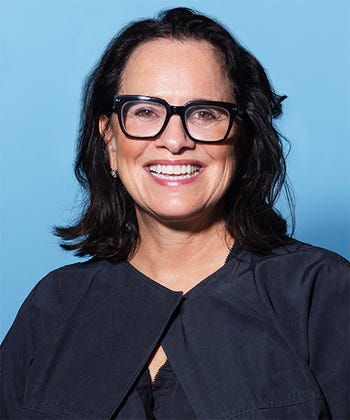FDA approves Oobli’s protein-based sweetener monellin
With five plant-based sweet proteins OK’d by the FDA, Oobli revolutionizes sugar replacement for food and beverage manufacturers. Read more.
December 20, 2024

At a Glance
- Oobli employs precision fermentation to produce nature-identical sweet proteins efficiently and affordably.
- With FDA GRAS status or ‘no questions’ letters, Oobli’s sweeteners set new standards in safety and innovation.
- Oobli has partnerships with Grupo Bimbo and wellness companies to create products that will be released in January.
Ali Wing, CEO of Oobli, is on a mission to make more products using less sugar.
“We're biologically designed to crave sugars,” Wing says. “It’s a healthy, normal craving, but we weren't designed to have it so available in our diets. Sweet proteins can be a way to meet the mouth where it wants to be, but reduce the load in the body by putting more of that in the protein.”
With its second “no questions” letter and GRAS (Generally Recognized as Safe) approval from the U.S. Food and Drug Administration for its use of the protein-based sweetener monellin—a novel sweet protein found in the serendipity berry—the Davis, California-based company can replace sweeteners with these cost-effective, climate-friendly proteins.
Armed with its precision fermentation technology, Oobli is the first and only company in the world regulated to sell sweet proteins as a sweetener, Wing says. Currently, Oobli has five sweet proteins with some form of U.S. regulatory approvals.
“Our goal is to partner with all ingredient and manufacturing partners to accomplish their objectives,” she says. Collaborations include Grupo Bimbo and soon-to-be-announced partnerships with companies in wellness, sports and nutrition categories making products such as electrolyte boosts and protein powders that will hit the market in January.
“We’re partnering with them, co-developing how to change the sweeteners they're using,” Wing says. “Sugar is kind of like fossil fuel. It’s too precious to use it as recklessly as we do. We need to upgrade its role. We should use it as an input to the process, not in every one of our favorite candy bars.”

Ali Wing, CEO, Oobli
Manufacturing to a standard
Oobli’s journey to its current form has taken many iterations. “We’re really a branded ingredient company,” Wing says. “So often we work with partners to replace sugar in their products. But we also sell chocolates.”
Much centers around Oobli’s groundbreaking food technology. “We are a sweet protein platform. What do I mean? Our technology is precision fermentation. We are fermenting proteins that were traditionally found in nature. We only work with nature-identical proteins. But instead of growing them, we are brewing them,” she says.
Like vats of beer, when sweet proteins are manufactured, their potency�—and sweetness—depends on how long you brew them, she says. “There’s sort of an efficiency before we say, ‘Are we brewed enough?’” Wing says.
Brewing usually lasts between four and five days. Each batch is brewed to a standard that makes it easier for large CPG companies to work with a standard translation to sugar so they can formulate more easily. Sweet proteins are between 1,000 to 5,000 times sweeter on a “weight-to-weight” comparison to sugar, she says.
Typically, though, Oobli manufactures its sweet proteins to be between 1,000 and 2,000 times sweeter than sugar. “One run is about 190,000 liters,” Wing says. “That’s the sweetening the equivalent of about 75 million cans of soda.”

Earning FDA approval
Jason Ryder, the company’s chief technology officer, co-founded Oobli, formerly Joywell Foods, in 2014. The company conducted what Wing described as “breakthrough manufacturing,” before it could start the FDA’s approval process.
“That means you have to produce kilos levels of toxicology studies before even talking to regulators,” she says, including 90-day mouse studies. Then it takes about a year to go through the safety studies and self-GRAS process. Still, the FDA has another 12 to 18 months to conduct a “no questions” review.
To help with regulatory approval, Oobli has “gone above and beyond any requirements to build a pretty conservative safety and toxicology strategy,” Wing says. “We are busy not only filing in the U.S. for these approvals but in countries throughout the world. We want to meet a global standard for that transparency.”
In March, Oobli earned its first “no questions” letter from the FDA ,which indicates the agency has no concerns about the safety of the two oubli fruit sweet proteins, brazzein 53 and brazzein 54. Along with monellin and the two types of brazzein, Oobli’s other sweet protein, miraculin—a sweet protein found in the miracle berry fruit plant—has either self-affirmed GRAS or “no questions” status, Wing says.
Thaumatin, the company’s fifth sweet protein going through regulatory approval, currently has FDA’s Flavor Extra Manufacturers Association GRAS status. It’s approved to be used as a fermented flavor, but not as an ingredient yet.
Wing estimates there are between a dozen to 18 types of sweet proteins already known and found in nature. “All of those are active somewhere on our research platform, our technology platform,” Wing says. “We know that not only one protein, but multiple proteins, are going to be really important.”
Finding the sweet proteins in nature
Unlike sugar, which is a carbohydrate, sweet proteins are, as the name suggests, proteins, Wing says.
These “curious proteins” grow mostly along the equator in Southeast Asia and West Africa, she says, in precious, resource-constrained environments like the top of the canopy of a rainforest. Monellin is found within a red berry on a tropical rainforest vine. Brazzein comes from the fruit of the oubli plant, and thaumatin, another type of sweet protein, comes from the katemfe fruit. All are found in West Africa.
“The only way those plants can survive or live is if a mobile species like an ape, gorilla or human eats them and spreads their seeds,” she says. Scientists believe the reason these plants evolved to make one little “sweet protein” was a matter of survival. Plants require a lot of calories to make the leafy greens they need for photosynthesis.
“[Plants] figured out that they could mimic a protein that could mimic what sugar does and produce it more calorically efficiently,” she says. That tricks the taste buds into thinking it's sugar, Wing says. When swallowed, it doesn't move through the body like a carbohydrate like sugar, it moves like a protein, making it easier for our body to break it down and use it more efficiently.
Partnerships bring sweet proteins to shelf
While sweet proteins can replace sweetness in foods and beverages, they can’t do everything sugar can. “Sugar does more roles than sweet proteins can,” Wing says. “Sweet proteins can only replace the sweetness but ‘how to bulk something,’ which sugar often plays in products, is not something sweet proteins can do.”
That can make partnering with baked goods companies more complicated than other categories. “If you had asked me when I joined here three years ago that the first global CPG partnership, I would announce was in baked, I would have said ‘no way,” Wing says. “It’s the hardest category because baked uses the most characteristics of sugar.”
That hasn’t stopped Oobli’s partnership with Grupo Bimbo, a Mexican multinational food company and the world’s largest baking company. “Grupo Bimbo has a strong initiative throughout the company to cut in half the amount of sweetness [used in products] but keep taste intact,” Wing says. “We can help them replace the role that sugar was playing, or a big part of it that was sweetness. But then they'll have to think about what impact it has to the bulking or the mouth feel, some of which vary by different product application.”
Read more about:
InnovationAbout the Author
You May Also Like





